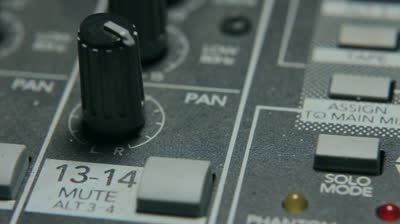Many times mixers take panning for granted, but it can actually be really helpful in helping with the clarity in a mix. Here’s an excerpt from the latest edition (the 3rd) of The Mixing Engineer’s Handbook that shows how 2 great mixers, Joe Chiccarelli and the late Don Smith, use panning to help a mix’s definition.
“While Panorama usually relates only to placement of a sound source within the stereo soundfield, the are actually other areas where panning can help a mixer.
Some mixers find than after their panning placements have been chosen and all their EQing is complete, sometimes just moving the instrument’s pan slightly can actually provide more clarity to the mix. In fact, if instruments are fighting for frequency space, the first thing to try is different panning.
What I do is once I have my sounds and everything is sitting pretty well, I’ll move the pans around a tiny bit. If I have something panned at 3 o’clock, I’ll inch it a tiny sliver from where I had it just because I found it can make things clearer that way. When you start moving panning around it’s almost like EQing something. I find that if I nudge it, it might get out of the way of something or even glue it together. Joe Chiccarelli
Some mixers even do some of their panning in mono (yes, that’s right)! This is because it’s easy to hear differences in phase, which make the instrument stand out when you go back to stereo.
I check my panning in mono with one speaker, believe it or not. When you pan around in mono, all of a sudden you’ll find that it’s coming through now and you’ve found the space for it. If I want to find a place for the hi hat for instance, sometimes I’ll go to mono and pan it around and you’ll find that it’s really present all of a sudden, and that’s the spot. Don Smith”


